According to the WHO Global Tuberculosis (TB) Report 2024, Tanzania has improved on the two TB burden indicators (TB incidence rate and TB deaths). The TB incidence rate has been reduced by 40% from 306 in 2015 to 183 in 2023, and the number of deaths due to TB for both HIV-positive and negative has been reduced by 68% from 58,000 in 2015 to 18,400 deaths in 2023. This has put Tanzania among the 3 countries with high TB burdens on track to reach the END TB milestone 2025 of reducing the Incidence rate by 50% in 2025 and among 13 countries in reducing the number of TB deaths by 75%. TB treatment success rates have reached 96% for TB cases notified in 2023 above the national and WHO targets of >90%.

Figure 1: END TB Milestone Status 2023

Figure 2: Trends in the TB incidence rate and estimated deaths caused by TB in Tanzania 2015-2023
Since the 2015 the TB notification has been increased by 6% per year with steady increase by 16% in 2022 and gradual decrease in 2023.
Tuberculosis Notifications by Region
Figure 3 below shows new and relapse TB cases notified by regions in 2023. Higher TB cases notification was reported in the following regions: Dodoma (7,086), Temeke MC (5,055), Tanga (4,335), Mwanza (4,265) and Morogoro (4,1450) while the lower TB cases notification was observed in Pemba Island (306), Kigamboni MC (595), Unguja island (807), Katavi (1,082) and Ilala II TB regions which includes the major hospitals in Dar es salaam (1,195).

Figure 3: Number of TB notification cases, new and relapse by region (Source: DHIS2-ETL)

Figure 4: Contribution in TB Notification per region (Source: DHIS2-ETL)
Tuberculosis Notification Rate
TB cases notification rate has been increasing since 2015, the percentage change between 2015 and 2023 is 16%. The year 2022 recorded the highest TB notification rate of 165 cases per 100,000 population in the last 10 years. Figure 5 below shows the trends of TB cases notification rate at the national level.
Figure 5:TB case notification rate trend, National.

Tuberculosis Notification Rate by regions
As shown in figure 5 below, the TB case notification rate among the TB and Leprosy regions. Temeke MC has the highest notification rate of 318.3, followed by Ilala MC (311), Kigamboni MC (279), Kinondoni (259), and Dodoma (245) were the top five regions with high TB notification rates. The low notification rates were observed in Pemba Island (49), Kigoma (57), Unguja Island (70), Rukwa (89), and Kagera (91).

Figure 6: TB cases notification rate, new and relapse by regions: 2023
Elderly TB notification
Tanzania defines elderly people as those aged 60 years and above. Elderly people are among the groups at risk of getting TB disease. Like in other risk groups, the TB programme interventions emphasize on TB active case findingfindings activities to be conducted to elderly people due to their risk of developing TB.
TB case notification rate among elderly people
Elderly people are among the group at risk of getting TB disease. Like in other risk groups, the TB program in the country emphasizes active TB case finding activities for elderly people due to their risk of developing TB. The TB cases notification rate among elderly group is four times higher than the general TB population. Also, the TB cases notification rate among the elderly population has shown an increasing trend since 2017 which was 427 to 634 in 2023. The data for years 2015 and 2016 are not included due to the difference in age grouping.

Figure 7: Elderly TB notification rate (Source: DHIS2-ETL)
TB cases notification rate among Elderly people by regions
TB case notification rate among elderly peoples varies from one region to another. Five regions with highest notification rate are Dodoma (1,379), Geita (1,109), Mara (1,061), Manyara (1,013), and Simiyu (969), while Unguja island (180), Pemba Island (251), Kigoma (340), Kilimanjaro (369) and Songwe (407) have the lowest TB notification rate as shown in figure 8 below.

Figure 8: Number of elderly people diagnosed with TB (Source: DHIS2-ETL)
TB Notification case for Key and Vulnerable Groups (KVP)
Reaching people with a high risk of TB (infection or disease) including those living in poor and rural settings, hard to reach areas such as miners, PWUIDs, fisherfolks and slums is key in TB control. In 2023, the program conducted community-led demand creation and systematic screening activities for the Key and Vulnerable Populations such as miners, fishermen, prisoners, Health care workers and Diabetes Mellitas patients.
TB case notification among key and vulnerable population
Table 1 below shows the number of TB cases notification among KVPs. More cases were reported from mining population followed by fisherfolks. However, there is a decreasing trend in notification among health care workers and DM patients.

Table 1: Trend of TB notification in Key and Vulnerable Population (Source: DHIS 2-ETL, 2023)
Bacteriologically confirmed Pulmonary TB cases
The country has adopted WHO recommendations for diagnosis of TB patients. This includes the use of smear microscopy and molecular Rapid Diagnostic tests including GeneXpert and Truenut mashines. These tests have been useful to yield more TB patients who are bacteriologically confirmed and minimized the clinical TB cases.
Proportion of Bacteriologically confirmed Pulmonary TB patients notified
The proportion of bacteriologically confirmed TB patients has decreased from 49.8% in 2017 to 40% in 2022. However, there is an increase to 49% in 2023. The decline in bacteriologically confirmed TB cases from 2017 to 2022 can be attributed to a shortage of reagents for smear and GeneXpert tests, as well as a suboptimal integrated Sample Referral System as a result of strengthened community TB interventions. These factors hindered the effective diagnosis and confirmation of TB cases during this period.
The increase in bacteriologically confirmed TB cases in 2023 is due to the implementation of the revised national TB diagnostic algorithm, which discourages the use of Chest X-Ray and other clinical diagnostic tools as the final diagnostic test for TB. This policy shift has led to a greater reliance on bacteriological methods for confirming TB, thereby improving the accuracy of diagnoses and increasing the number of confirmed cases. Figure 9 below, shows trends of Proportion of Bacteriologically confirmed Pulmonary TB patients notified from 2017 to 2023. data for years 2015 and 2016 were not included due to the difference in cases definition and classification.
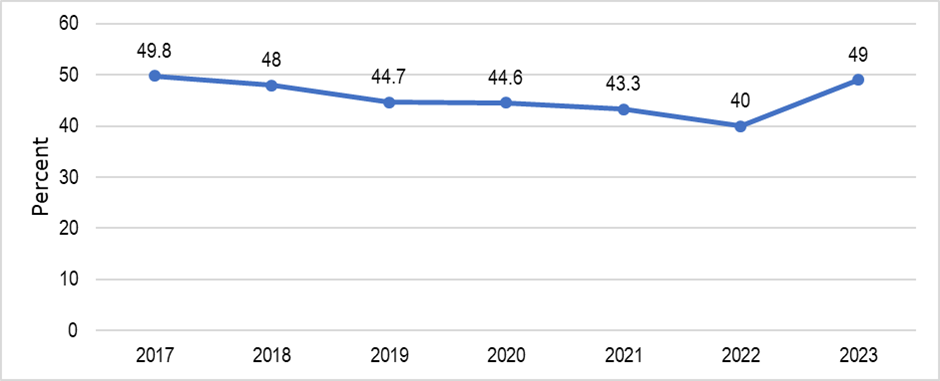
Figure 9: Proportion of Bacteriologically Confirmed Pulmonary TB patients notified (Source: DHIS2 – ETL)
Percent of new and relapse TB cases tested using mWRDs at the time of diagnosis
Percentage of new and relapse TB cases tested using Molecular WHO recommended Rapid Diagnostic as initial test has increased from 14.7% in 2017 to 66.4% in 2023. That increase was due to addition of number of GeneXpert machines from 93 in 2015 to 342 in 2023 and adoption of Truenat technology with 37 machines in 2023.
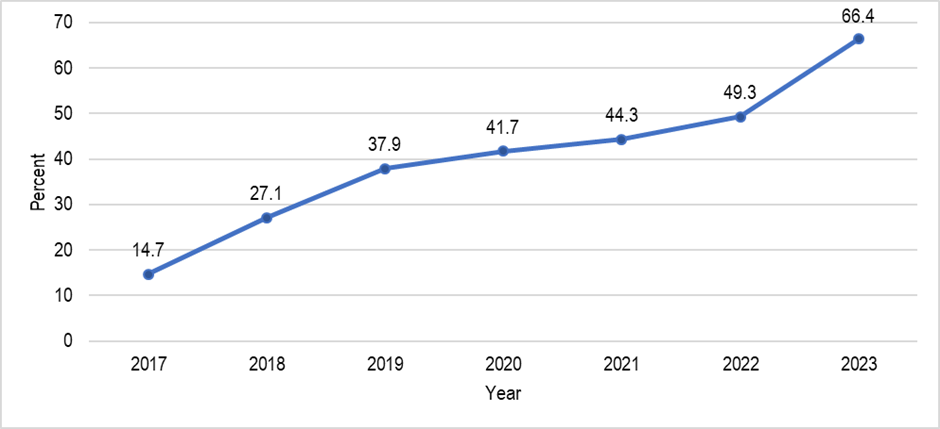
Figure 10: Percent of new and relapse TB cases tested using WHO Recommended Rapid diagnostic tests (mWRDs) at the time of diagnosis (Source: DHIS2-ETL)
Percent of new and relapse TB cases tested using mWRDs at the time of diagnosis by regions
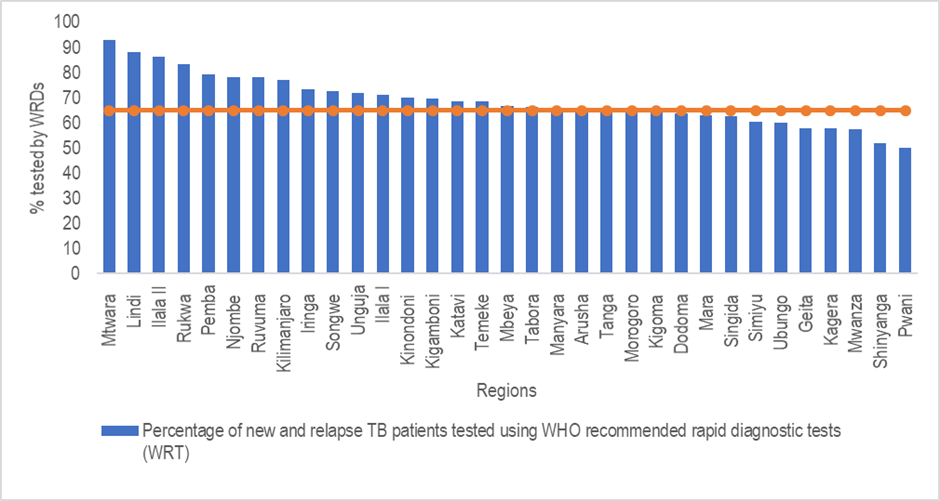
Figure 11: Percent of new and relapse TB cases tested using WHO recommended rapid diagnostic tests (mWRDs) at the time of diagnosis (Source: DHIS2-ETL)
Figure 11 above displays in 2023 new and relapse TB cases tested using WHO recommended rapid diagnostic test (mWRDs) as initial test during diagnosis. The national target was 65%, 11 out of 33 TB and Leprosy regions did not attain the national target. Five regions with the highest performance are Mtwara (98%), Lindi (88%), Ilala II (86%), Rukwa (84%) and Pemba Island (79%) while regions of Pwani (50%), Shinyanga (52%), Mwanza (57%), Kagera (58%) and Geita (58%) were the lowest performer in 2023.
Bacteriological confirmation rate
This refers to the proportion of reported TB cases that have been confirmed through laboratory tests by detecting the presence of mTB among new and relapse TB patients in clinical sample.
The country surpassed the national target of Bacteriological confirmation rate at 87% compared to the target of 80% in 2023.
Trend of bacteriological confirmation rate among notified new and relapse TB cases 2017 to 2023
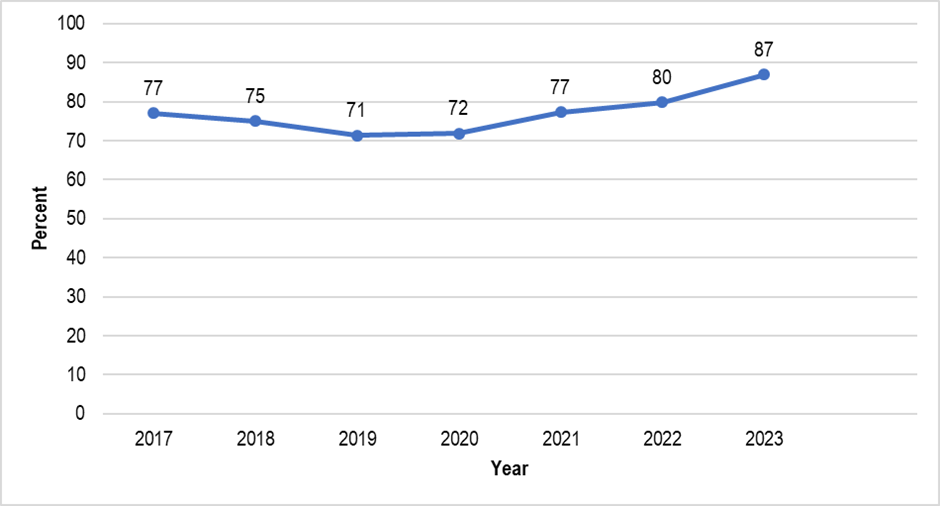
Figure 12: Bacteriological confirmation rate, among pulmonary TB patients, national trend (Source: DHIS2-ETL)
Bacteriological confirmation rate among new and relapse TB cases by region in 2023
In 2023, Ruvuma region had the highest confirmation rate of 99%, Kagera region had the lowest confirmation rate of 72%. And others which had not reached target were Singida (79%), Unguja (79%), Pwani (75%) and Mbeya (75%)
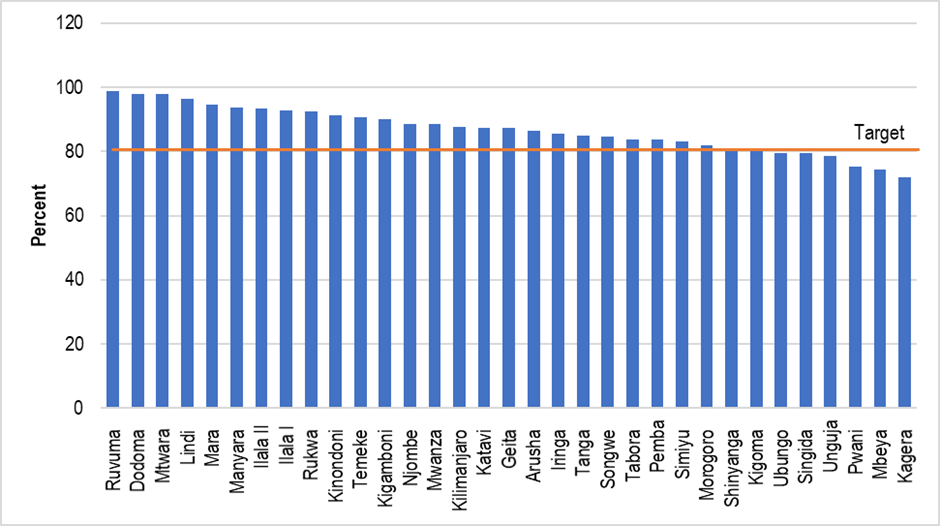
Figure 13: Bacteriological confirmation rate by region (Source: DHIS2-ETL)
DST Coverage among bacteriologically confirmed TB patients
The universal DST Coverage requires all TB patients to access DST testing for at least rifampicin. The country has put a target of 100% DST coverage for among all bacteriologically confirmed TB cases in order to rule out drug resistance and also as DR-TB case finding strategy.
Percentage of bacteriologically confirmed TB patients with DST result for at least rifampicin
The country shows the good progress towards DST coverage for bacteriologically confirmed TB patients. in 2023 all regions except Pemba did not attain the national target of ensuring 100% of bacteriologically confirmed TB patients with DST result for at least rifampicin. Dodoma region shows low bacteriologically confirmation rate of 57.6% compared to other regions.
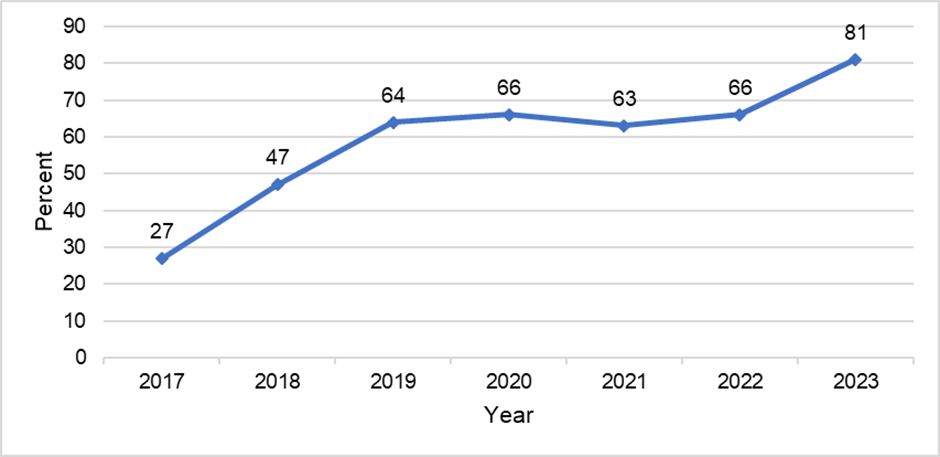
Figure 14:Percent of bacteriologically confirmed TB patients with DST result for at least rifampicin
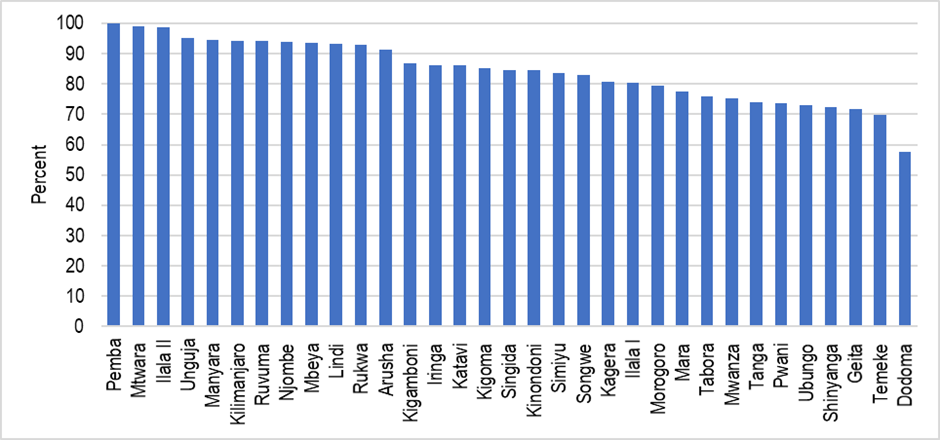
Figure 15: Percent of bacteriologically confirmed TB patients with DST result for at least rifampicin per region (Source: DHIS2-ET)